Banded agate is a type of chalcedony quartz characterized by its unique banding patterns, which are formed by alternating layers of different colors and textures. These bands can vary in color, thickness, and clarity, creating mesmerizing patterns that are highly prized for their aesthetic appeal.
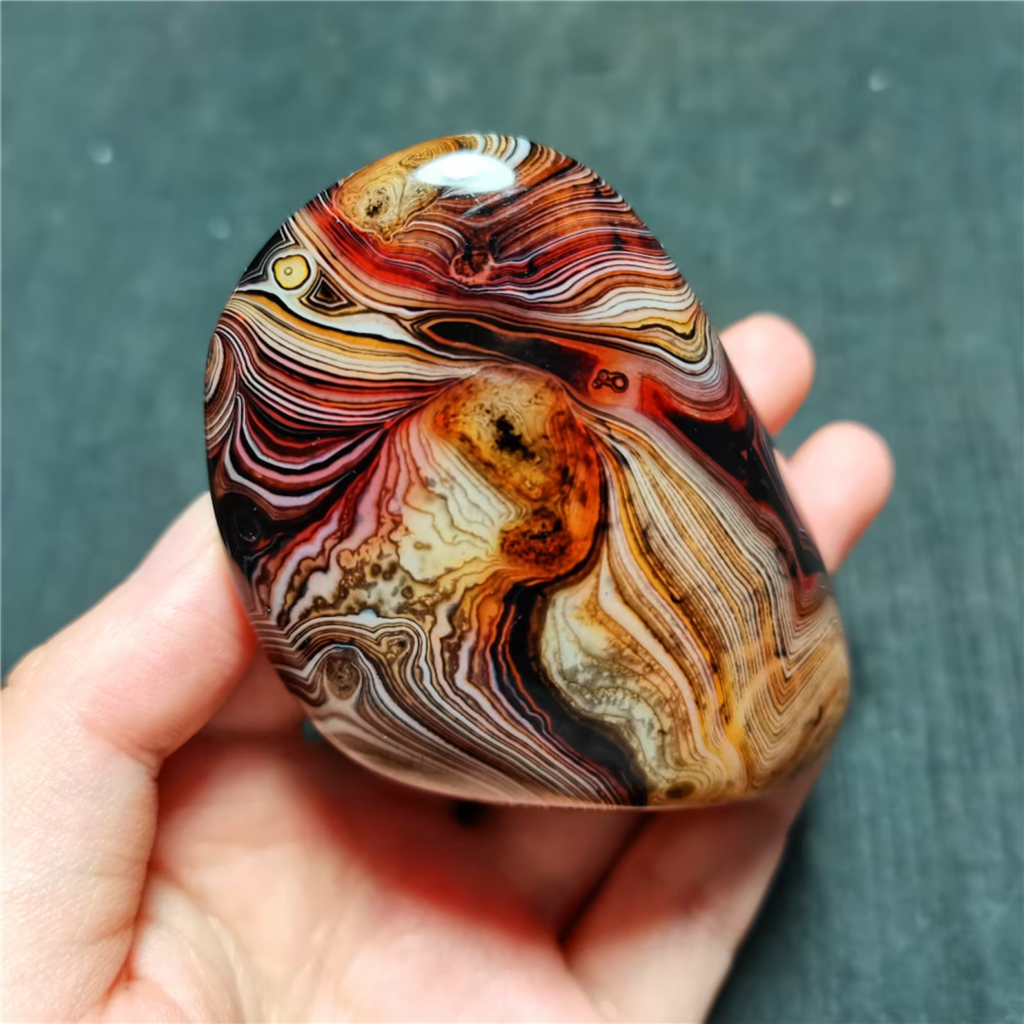
The formation of banded agate occurs through a process called deposition, where silica-rich groundwater flows into cavities within rocks or volcanic formations. As the silica solution slowly crystallizes over time, it forms layers of microscopic quartz crystals, resulting in the distinctive banding patterns. These bands may be composed of various minerals and impurities, which contribute to the diverse range of colors and textures found in banded agate specimens.
Banded agate holds significant cultural, spiritual, and metaphysical significance across different societies and belief systems. In many ancient cultures, it was revered for its supposed protective properties and was often used in amulets, talismans, and jewelry to ward off negative energies and promote harmony and balance. Additionally, banded agate is believed to enhance mental clarity, emotional stability, and physical strength, making it a popular choice for meditation and healing practices.
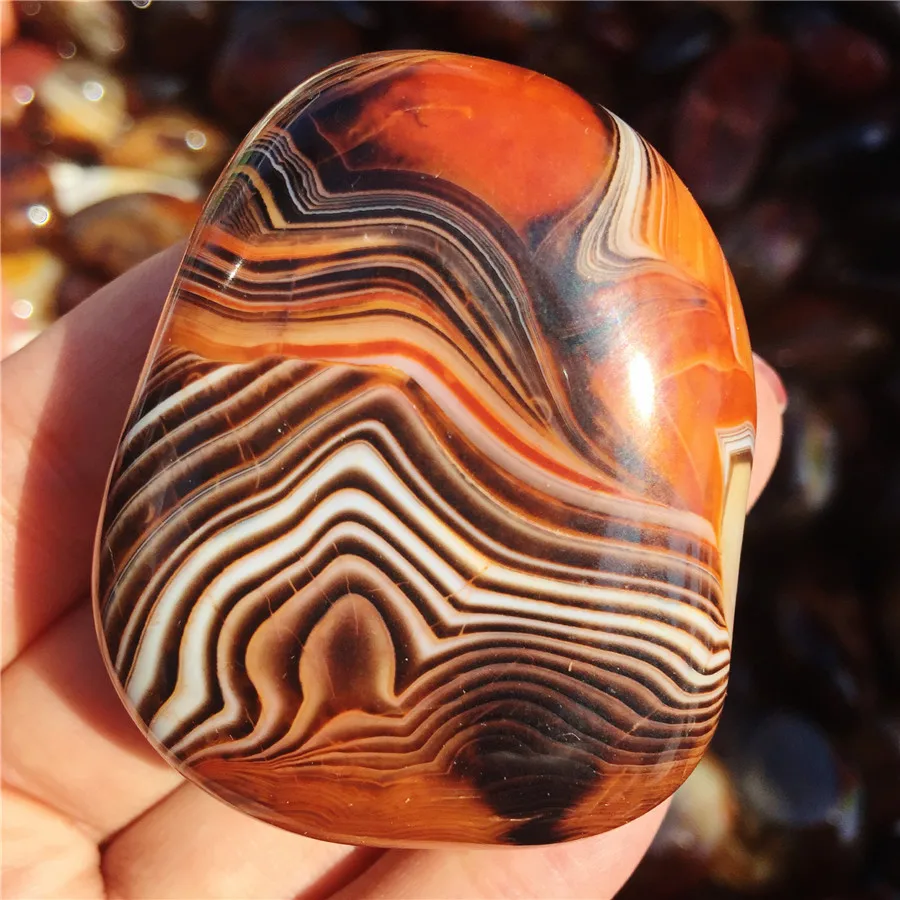
Beyond its metaphysical properties, banded agate is also highly valued for its ornamental beauty and has been used for decorative purposes in jewelry, sculpture, and architecture for centuries. Its exquisite banding patterns make each piece unique, adding a touch of elegance and sophistication to any setting.
Overall, banded agate is not only a stunning example of nature’s artistry but also a symbol of protection, strength, and beauty that has captivated humanity for generations.
Formation and Geology of Banded Agate
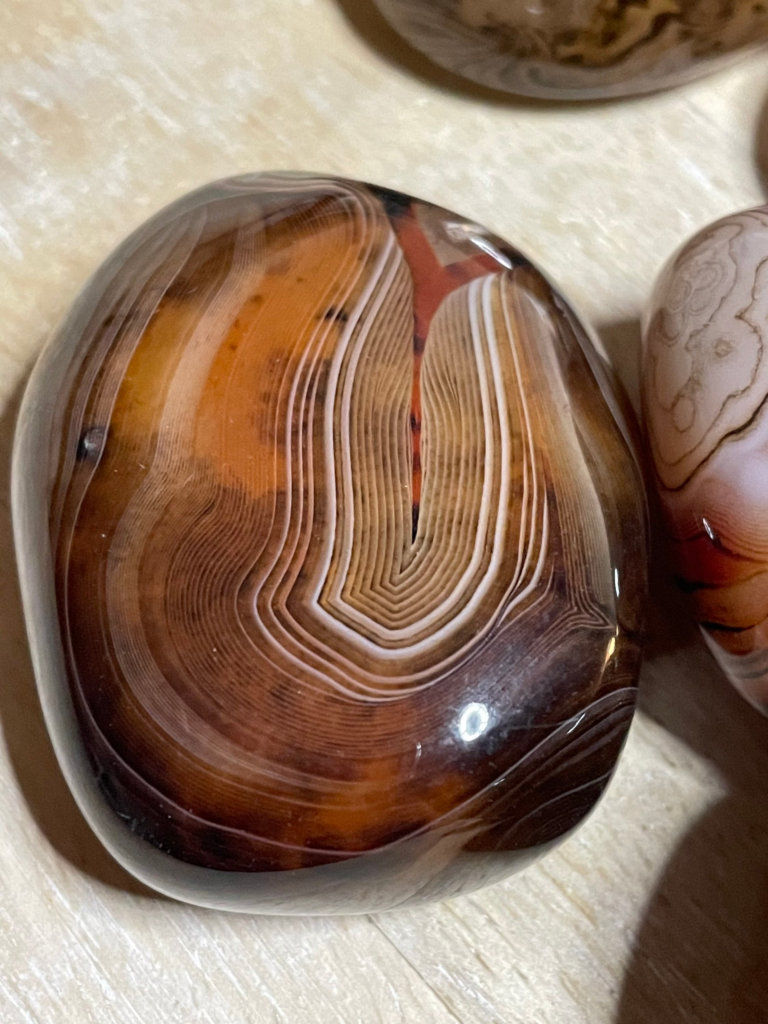
Banded agate formation is intricately tied to geological processes involving the deposition of silica-rich fluids within cavities or voids in rocks or volcanic formations. Here’s a breakdown of the formation and geology of banded agate:
- Formation Process: Banded agate forms through a process known as precipitation or deposition. This process typically begins when silica-rich fluids, often containing dissolved minerals and other impurities, infiltrate cavities within host rocks. These cavities can result from various geological events such as volcanic activity, weathering, or tectonic movements.
- Silica Deposition: As the silica-rich fluids enter the cavities, they slowly cool and undergo changes in pressure and temperature. This causes the dissolved silica to precipitate out of solution and crystallize, forming tiny quartz crystals. Over time, these quartz crystals accumulate and grow, layer by layer, along the walls of the cavity.
- Band Formation: The banding patterns in banded agate are created by variations in the composition of the silica-rich fluids and the presence of other minerals or impurities. As the deposition process continues, different layers of quartz crystals form, each with its own distinct color, texture, or opacity. These alternating layers give rise to the characteristic bands seen in banded agate specimens.
- Coloration and Impurities: The colors and patterns observed in banded agate are influenced by the presence of various impurities and trace elements within the silica-rich fluids. For example, iron oxides may impart red, orange, or yellow hues, while manganese oxides can produce shades of brown, black, or gray. Other minerals and organic compounds can also contribute to the diverse range of colors and textures found in banded agate.
- Geological Settings: Banded agate can form in a variety of geological settings, including volcanic rocks (such as basalt or rhyolite), sedimentary rocks (such as limestone or shale), and metamorphic rocks (such as quartzite). It is often associated with volcanic or igneous environments where silica-rich fluids are readily available for deposition.
Overall, the formation of banded agate is a complex interplay of geological processes involving the deposition of silica-rich fluids, crystallization of quartz, and the presence of impurities, resulting in the exquisite banding patterns that make banded agate specimens prized for their beauty and uniqueness.
Types and Varieties of Banded Agate

Banded agate exhibits a wide range of colors, patterns, and textures, leading to numerous types and varieties. Here are some of the most well-known types and varieties of banded agate:
- Botswana Agate: Originating from Botswana, Africa, this type of banded agate is known for its predominantly gray, pink, and white banding patterns. It often displays intricate, lace-like formations and may feature fortification patterns resembling the walls of a fortress.
- Brazilian Agate: Brazilian agate is renowned for its vibrant and colorful banding patterns. It can feature a wide array of hues, including reds, oranges, yellows, blues, and greens. Brazilian agate is highly sought after by lapidaries and collectors for its striking beauty.
- Crazy Lace Agate: This variety of banded agate is characterized by its chaotic and intricate banding patterns, resembling tangled lace. Crazy lace agate often features a mix of colors, including white, gray, red, orange, and brown, creating visually captivating designs.
- Moss Agate: Moss agate is distinguished by its translucent to opaque appearance and the presence of green or black dendritic inclusions that resemble moss or foliage. These inclusions are typically composed of manganese or iron oxides and add a unique organic element to the stone’s appearance.
- Blue Lace Agate: As the name suggests, blue lace agate exhibits delicate, light blue banding patterns interspersed with white or gray layers. It is prized for its soothing and calming energy, as well as its gentle, serene appearance.
- Fire Agate: Fire agate is known for its iridescent play-of-color, which results from the diffraction of light within the stone’s structure. It often displays warm hues such as red, orange, and gold, creating a fiery, dynamic effect.
- Laguna Agate: Originating from the state of Chihuahua, Mexico, Laguna agate is celebrated for its vibrant colors and intricate banding patterns. It commonly features hues of red, orange, yellow, and white, with translucent to opaque layers that create a stunning visual impact.
- Plume Agate: Plume agate is characterized by feathery or plume-like inclusions within its banding patterns. These inclusions may resemble clouds, ferns, or other organic forms, adding depth and interest to the stone’s appearance.
These are just a few examples of the diverse types and varieties of banded agate found worldwide. Each type exhibits its own unique characteristics, making banded agate a fascinating and highly collectible gemstone among lapidaries, jewelry designers, and enthusiasts.
Physical Properties of Banded Agate
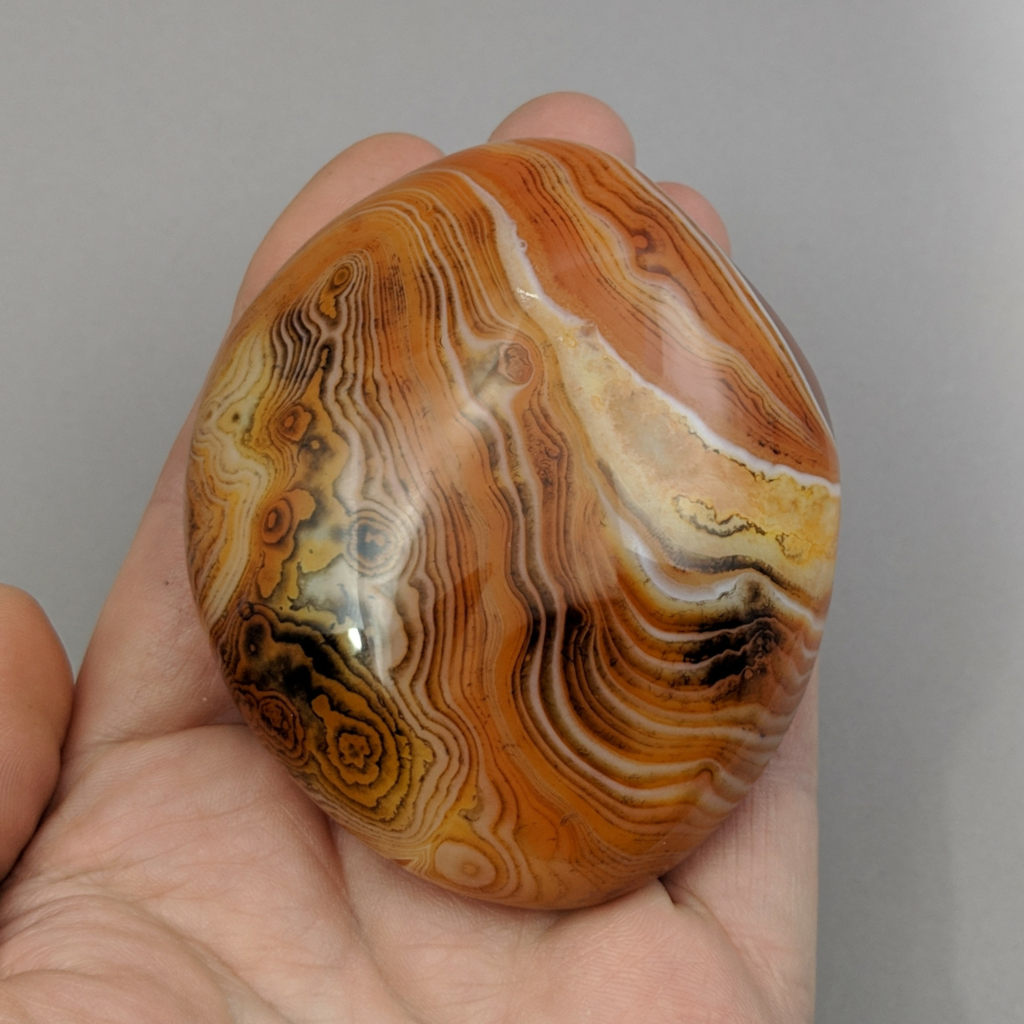
Banded agate, like other varieties of chalcedony quartz, possesses several distinct physical properties that contribute to its unique appearance and characteristics. Here are some of the key physical properties of banded agate:
- Hardness: Banded agate has a hardness of around 6.5 to 7 on the Mohs scale, making it relatively durable and resistant to scratching. This hardness allows it to withstand normal wear and tear, making it suitable for use in jewelry and decorative objects.
- Density: The density of banded agate typically ranges from 2.58 to 2.64 grams per cubic centimeter. This density can vary depending on factors such as the composition of the individual bands and any impurities present within the stone.
- Color: Banded agate exhibits a wide range of colors, including but not limited to white, gray, black, brown, red, orange, yellow, blue, green, and purple. The banding patterns in banded agate can vary in intensity, clarity, and distribution, giving rise to an endless array of color combinations and visual effects.
- Transparency: Banded agate is typically translucent to opaque, meaning that light may pass through some portions of the stone but not others. The level of transparency can vary depending on factors such as the thickness of the individual bands and the presence of impurities or inclusions.
- Luster: Banded agate exhibits a vitreous or glassy luster when polished, giving it a smooth and shiny appearance. This luster enhances the stone’s visual appeal and contributes to its desirability for use in jewelry and ornamental objects.
- Cleavage and Fracture: Banded agate has no cleavage, meaning it does not break along specific planes like some minerals. Instead, it typically displays conchoidal fracture, characterized by smooth, curved surfaces that result from the breakage of the stone.
- Specific Gravity: The specific gravity of banded agate falls within the range of approximately 2.58 to 2.64, indicating that it is denser than water. This property can be useful for distinguishing banded agate from other materials based on its relative weight.
These physical properties contribute to the overall appearance, durability, and suitability of banded agate for various applications, including jewelry making, lapidary work, and decorative arts.
Uses and Applications of Banded Agate
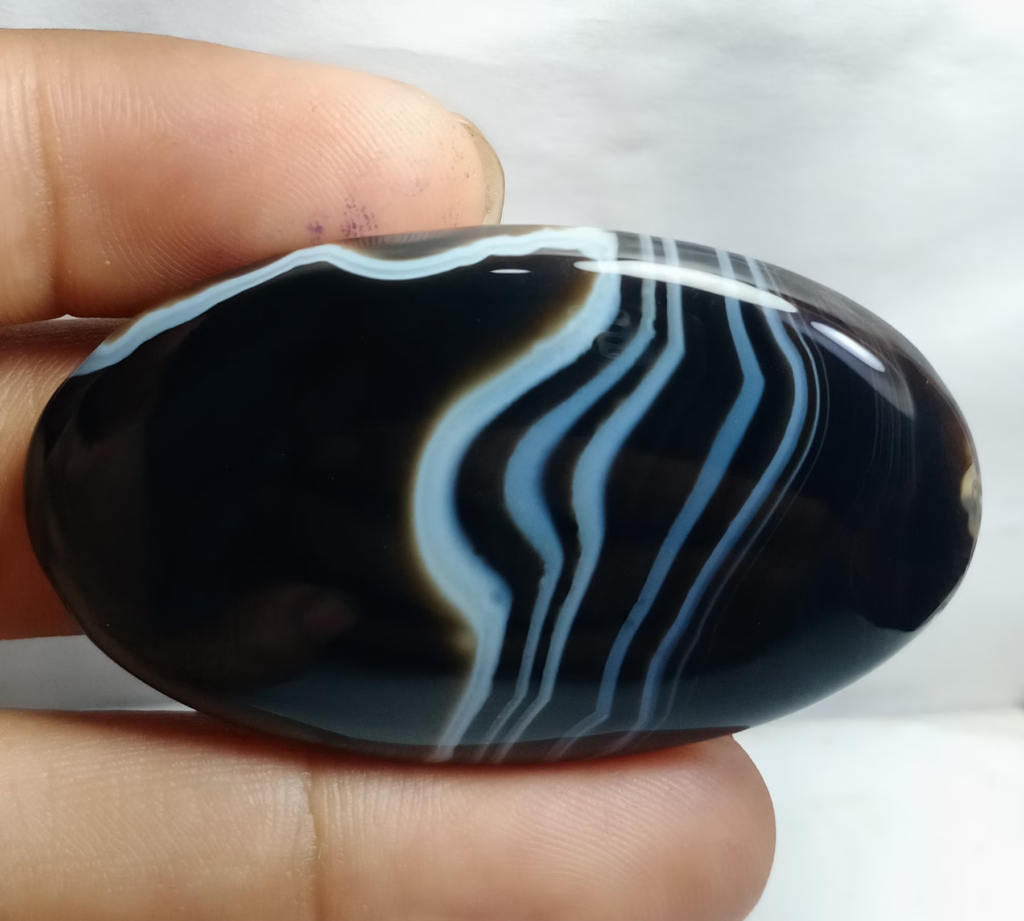
Banded agate is a versatile gemstone that has been used for various purposes throughout history. Its unique appearance and physical properties make it well-suited for a wide range of applications, including:
- Jewelry: Banded agate is commonly used in jewelry making, where it is fashioned into cabochons, beads, pendants, and other ornamental pieces. Its vibrant colors and distinctive banding patterns make it a popular choice for statement pieces and accent stones in rings, necklaces, bracelets, and earrings.
- Carvings and Sculptures: Banded agate’s hardness and durability make it ideal for carving and sculpting into intricate designs and figurines. Artisans often create sculptures, cameos, and decorative objects using banded agate due to its ability to hold fine details and withstand shaping and polishing processes.
- Lapidary Art: Banded agate is highly prized by lapidaries for its beauty and versatility. It can be cut, shaped, and polished into a wide variety of forms, including cabochons, beads, faceted gems, and decorative inlays for furniture and objets d’art.
- Healing and Metaphysical Practices: In various cultures and belief systems, banded agate is believed to possess metaphysical properties that promote balance, protection, and spiritual growth. It is often used in crystal healing practices, meditation, and energy work to enhance mental clarity, emotional stability, and physical well-being.
- Decorative Objects: Banded agate’s exquisite banding patterns and vibrant colors make it a popular choice for decorative objects such as bookends, paperweights, bowls, vases, and clock faces. Its natural beauty adds a touch of elegance and sophistication to any interior space.
- Collecting and Display: Banded agate is highly sought after by collectors and enthusiasts for its beauty, rarity, and diversity. Collectors often seek out specimens with unique banding patterns, vivid colors, and exceptional clarity to add to their collections or display in museums, galleries, and private collections.
- Historical and Cultural Artifacts: Throughout history, banded agate has been treasured for its beauty and symbolic significance in various cultures and civilizations. Ancient artifacts such as amulets, talismans, and ceremonial objects often feature banded agate due to its association with protection, strength, and spiritual enlightenment.
Overall, banded agate’s versatility, beauty, and cultural significance have cemented its place as a beloved gemstone with enduring appeal in jewelry, art, and spiritual practices around the world.
Occurrence and Locations
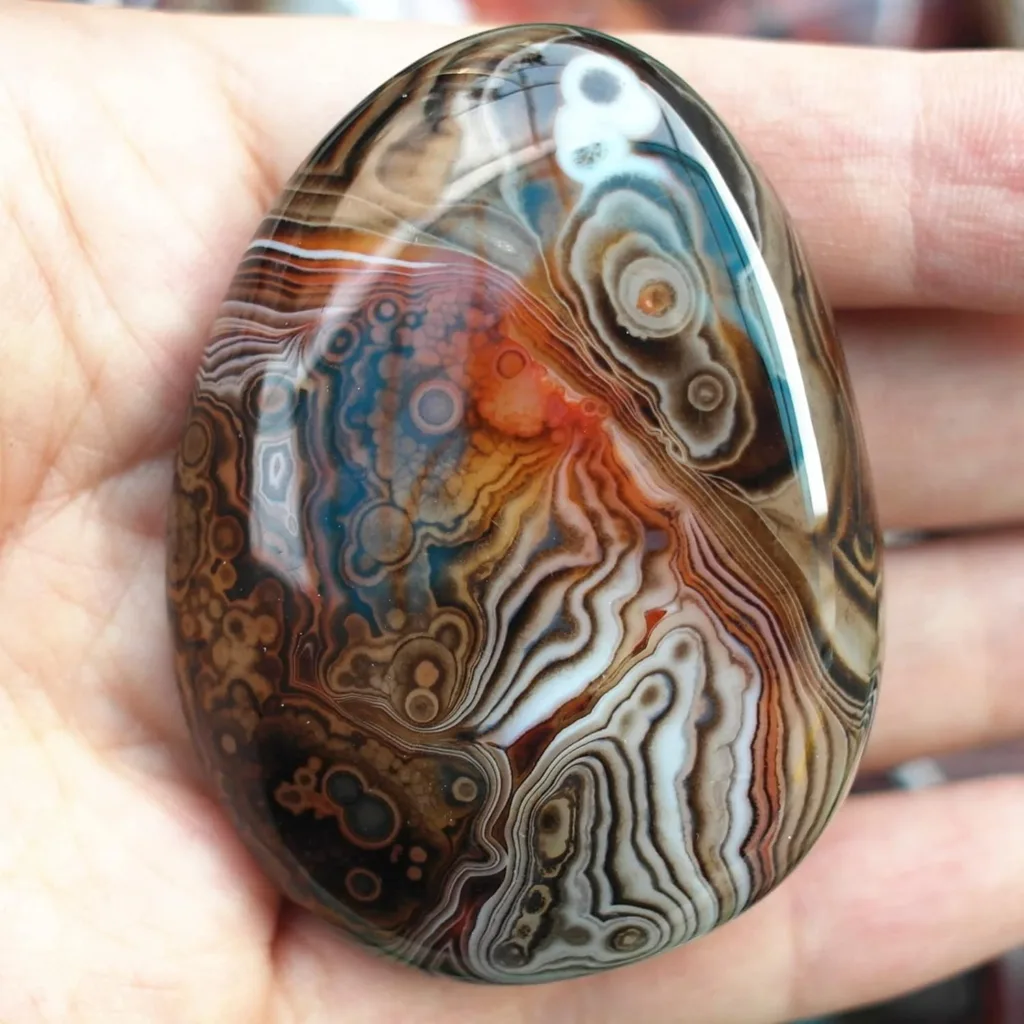
Banded agate occurs in various locations around the world, with each region producing unique specimens distinguished by their colors, patterns, and characteristics. Some of the notable occurrences and locations of banded agate include:
- Brazil: Brazil is renowned for producing a wide variety of banded agate, including specimens with vibrant colors and intricate banding patterns. The state of Rio Grande do Sul, in particular, is known for its rich deposits of colorful agates, including the famous Brazilian agate.
- Mexico: Mexico is another major producer of banded agate, with several notable locations known for their high-quality specimens. The state of Chihuahua is famous for Laguna agate, prized for its vibrant colors and intricate banding patterns. Other Mexican states, such as Durango and Sonora, also produce banded agate of exceptional quality.
- United States: Banded agate is found in various states across the United States, with notable occurrences in locations such as Oregon, Montana, and Wyoming. Oregon, in particular, is known for its famous Oregon blue agate, characterized by its distinctive blue hues and intricate banding patterns.
- Botswana: Botswana is a significant producer of banded agate, particularly Botswana agate, known for its predominantly gray, pink, and white banding patterns. This type of agate is highly prized for its delicate lace-like formations and is often used in jewelry and ornamental objects.
- India: India is home to several locations known for their banded agate deposits, including the states of Maharashtra and Gujarat. Indian agates often exhibit a wide range of colors and patterns, making them popular among lapidaries and jewelry designers.
- Madagascar: Madagascar is known for its diverse gemstone deposits, including banded agate. Agates from Madagascar often feature bold colors and striking banding patterns, making them highly sought after by collectors and enthusiasts.
- Uruguay: Uruguay is famous for its rich deposits of banded agate, particularly amethyst and agate geodes. These geodes often contain stunning displays of banded agate with vibrant colors and intricate patterns, making them prized specimens for collectors and lapidaries.
These are just a few examples of the many locations worldwide where banded agate can be found. Each region offers its own unique variations of banded agate, making it a fascinating and diverse gemstone cherished by collectors, lapidaries, and enthusiasts around the world.




































